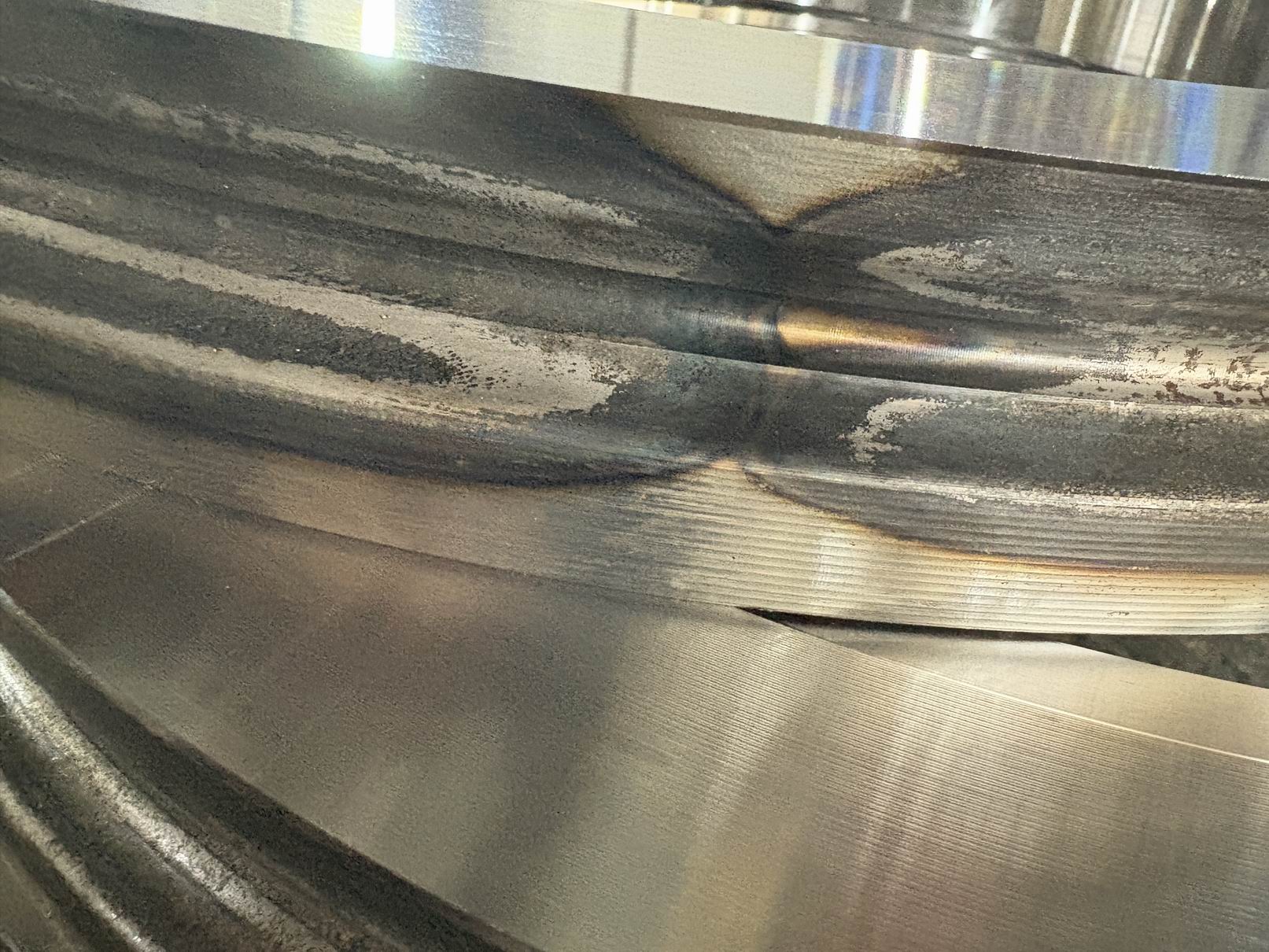During the production process of slewing rings, the design and treatment of the quenched soft band (marked as the ‘S’ zone) directly impact product lifespan and safety. The soft band is the non-hardened area retained during the quenching process, serving to release stress and prevent quenching cracks. However, the dimensions and position must be strictly controlled.

Key Requirements and Considerations:
Dimension Accuracy: The width of the soft zone is typically controlled to not exceed the diameter of the plug hole +35 mm;
Positioning Specifications: It must be located in the non-load area of the raceway (e.g., between bolt hole center) and must not appear on the main load surface;
Production Control:
► When using medium-frequency quenching, the ‘S’ zone must be precisely positioned in advance using fixtures;
► 100% magnetic particle inspection after quenching to ensure no crack in the soft area;
► Permanently mark the ‘S’ position for customer installation alignment (to avoid soft band loading).
Importance: Deviating soft bands can cause stress concentration, premature fatigue peeling, or even support failure. Precise control of the soft band of the slewing bearing is a core process for ensuring safe operation of heavy-duty equipment (such as construction machinery).

